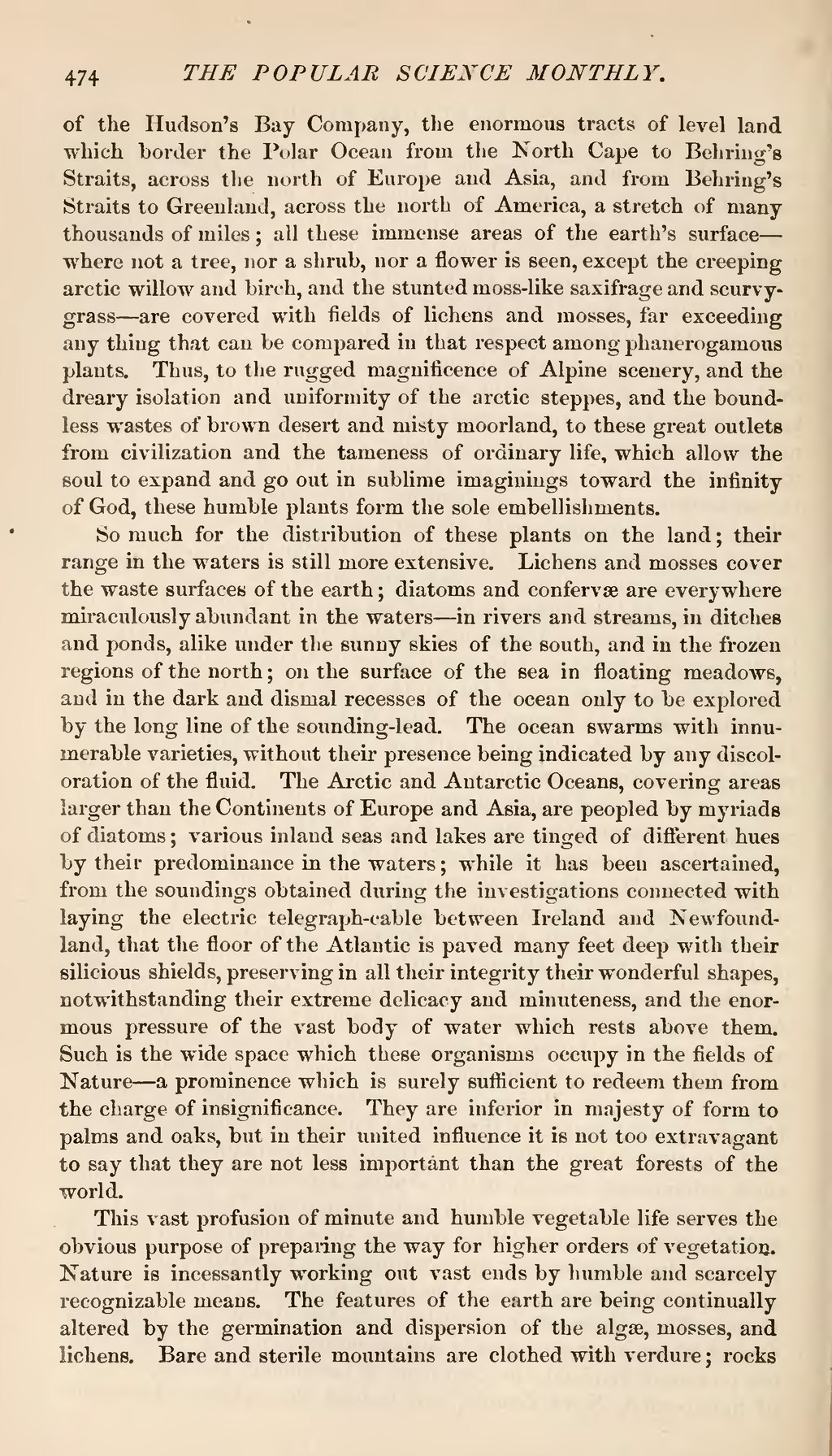of the Hudson's Bay Company, the enormous tracts of level land which border the Polar Ocean from the North Cape to Behring's Straits, across the north of Europe and Asia, and from Behring's Straits to Greenland, across the north of America, a stretch of many thousands of miles; all these immense areas of the earth's surface—where not a tree, nor a shrub, nor a flower is seen, except the creeping arctic willow and birch, and the stunted moss-like saxifrage and scurvy-grass—are covered with fields of lichens and mosses, far exceeding any thing that can be compared in that respect among phanerogamous plants. Thus, to the rugged magnificence of Alpine scenery, and the dreary isolation and uniformity of the arctic steppes, and the boundless wastes of brown desert and misty moorland, to these great outlets from civilization and the tameness of ordinary life, which allow the soul to expand and go out in sublime imaginings toward the infinity of God, these humble plants form the sole embellishments.
So much for the distribution of these plants on the land; their range in the waters is still more extensive. Lichens and mosses cover the waste surfaces of the earth; diatoms and confervas are everywhere miraculously abundant in the waters—in rivers and streams, in ditches and ponds, alike under the sunny skies of the south, and in the frozen regions of the north; on the surface of the sea in floating meadows, and in the dark and dismal recesses of the ocean only to be explored by the long line of the sounding-lead. The ocean swarms with innumerable varieties, without their presence being indicated by any discoloration of the fluid. The Arctic and Antarctic Oceans, covering areas larger than the Continents of Europe and Asia, are peopled by myriads of diatoms; various inland seas and lakes are tinged of different hues by their predominance in the waters; while it has been ascertained, from the soundings obtained during the investigations connected with laying the electric telegraph-cable between Ireland and Newfoundland, that the floor of the Atlantic is paved many feet deep with their silicious shields, preserving in all their integrity their wonderful shapes, notwithstanding their extreme delicacy and minuteness, and the enormous pressure of the vast body of water which rests above them. Such is the wide space which these organisms occupy in the fields of Nature—a prominence which is surely sufficient to redeem them from the charge of insignificance. They are inferior in majesty of form to palms and oaks, but in their united influence it is not too extravagant to say that they are not less important than the great forests of the world.
This vast profusion of minute and humble vegetable life serves the obvious purpose of preparing the way for higher orders of vegetation. Nature is incessantly working out vast ends by humble and scarcely recognizable means. The features of the earth are being continually altered by the germination and dispersion of the algae, mosses, and lichens. Bare and sterile mountains are clothed with verdure; rocks
